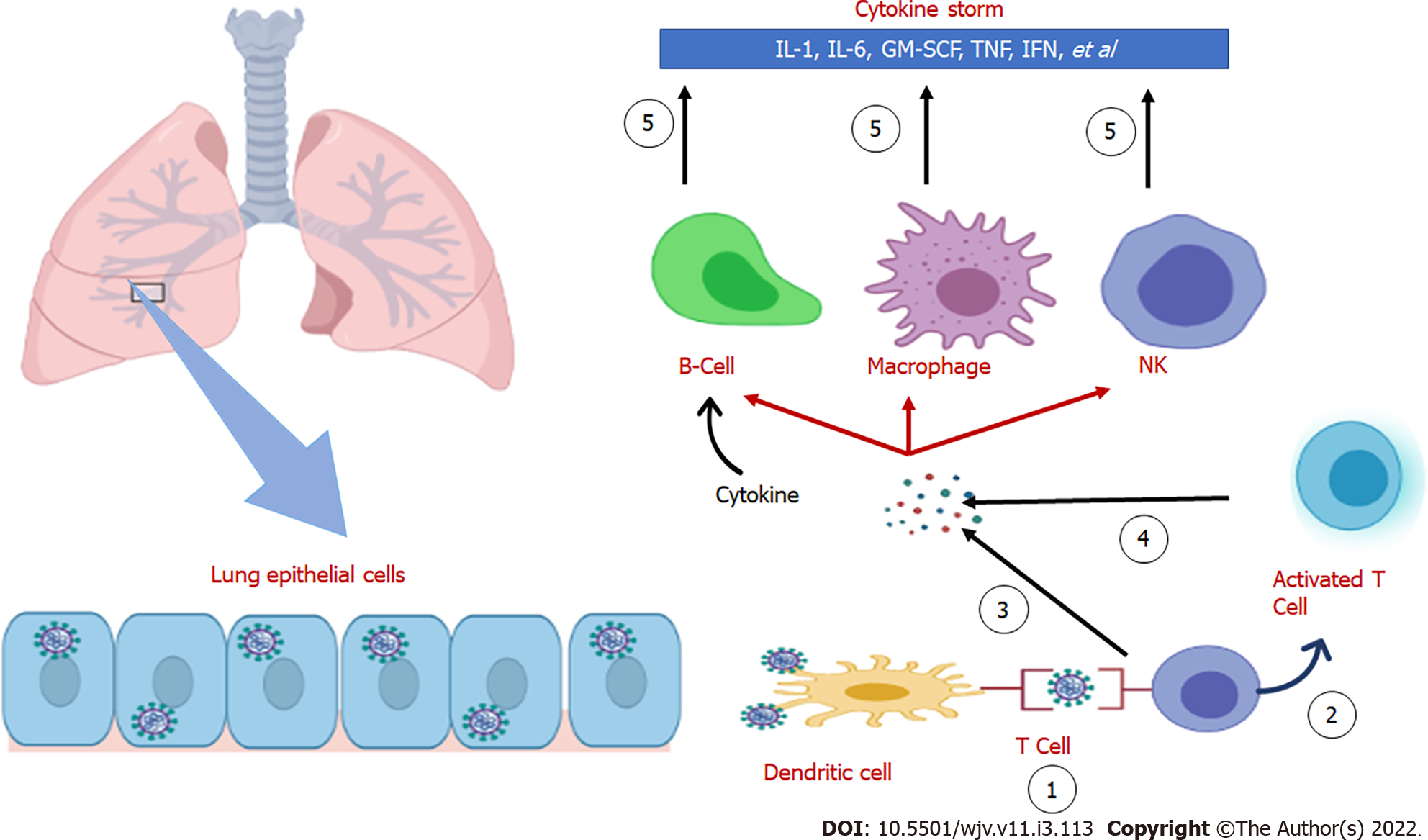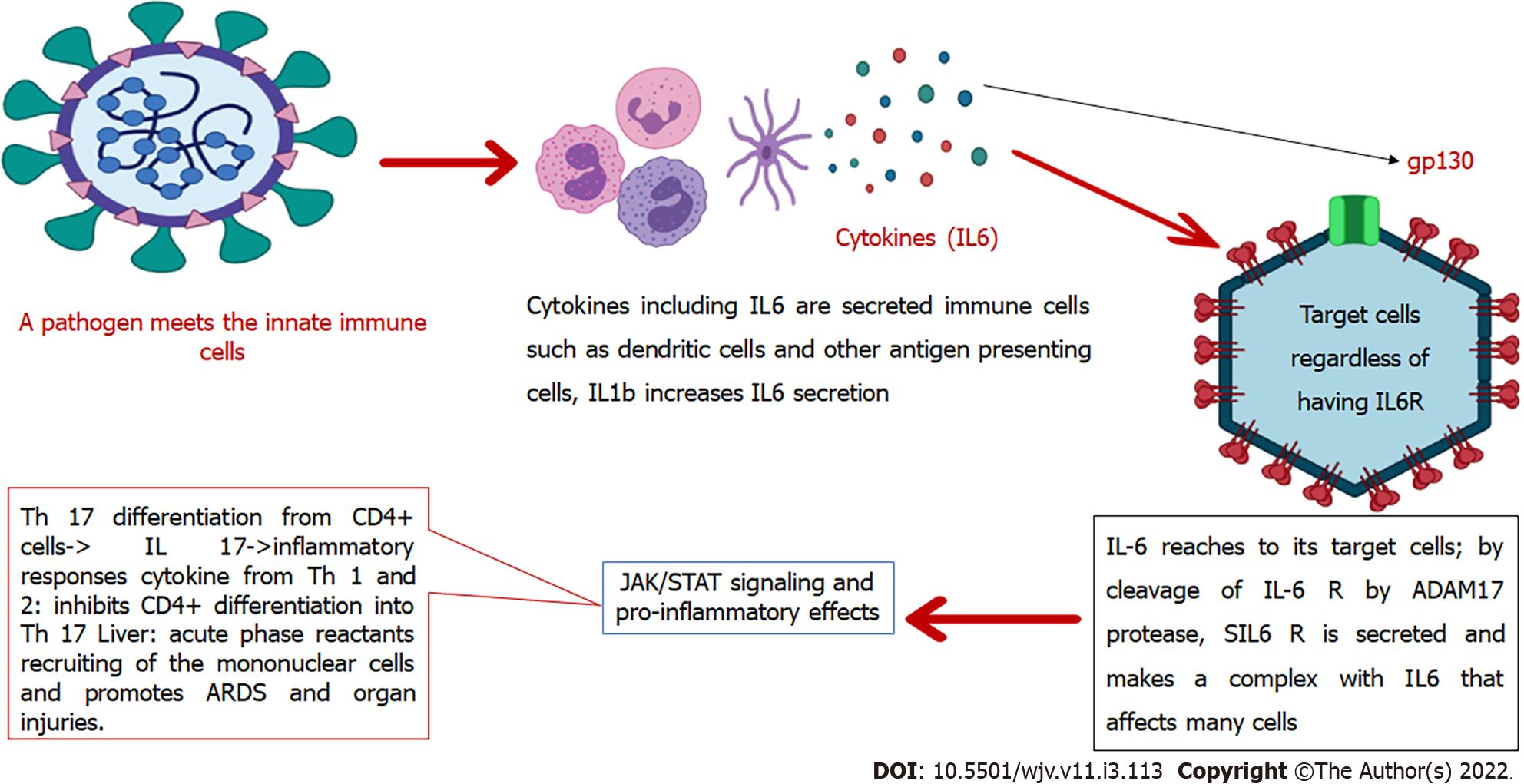Copyright
©The Author(s) 2022.
World J Virol. May 25, 2022; 11(3): 113-128
Published online May 25, 2022. doi: 10.5501/wjv.v11.i3.113
Published online May 25, 2022. doi: 10.5501/wjv.v11.i3.113
Figure 1 The mechanism of the inflammatory storm.
① Antigen presenting; Dendritic cells activate T-cells by processing the antigen and delivering it to these cells; ② Start reproducing; Native T cells become activated by receiving antigens from dendritic cells; ③ A significant quantity of cytokines is secreted during the activation of T cells. These cytokines can activate B cells, macrophages, and NK cells; ④ Activated T cells also release cytokines and further activate macrophages, B cells and NK cells; ⑤ Cytokines secreted; These activated cells, in turn, lead to the secretion of inflammatory and pro-inflammatory cytokines; the resulting cytokine storm leads to the development of clinical signs of infection.
Figure 2 Interleukin-6 in the immune system.
IL: Interleukin; JAK-STAT: Janus kinase and signal transducer and activator of transcription.
- Citation: Bahmani M, Chegini R, Ghanbari E, Sheykhsaran E, Shiri Aghbash P, Leylabadlo HE, Moradian E, Kazemzadeh Houjaghan AM, Bannazadeh Baghi H. Severe acute respiratory syndrome coronavirus 2 infection: Role of interleukin-6 and the inflammatory cascade. World J Virol 2022; 11(3): 113-128
- URL: https://www.wjgnet.com/2220-3249/full/v11/i3/113.htm
- DOI: https://dx.doi.org/10.5501/wjv.v11.i3.113










